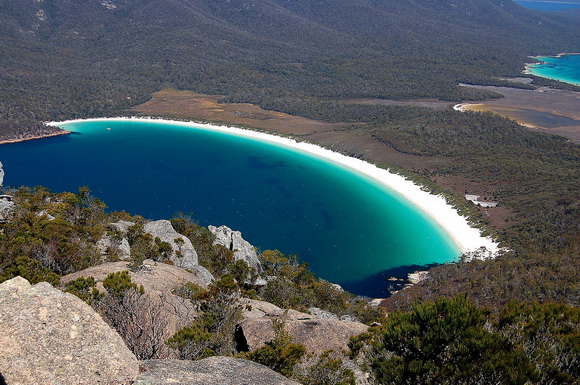Tasmania Island in Australia


The island of Tasmania is completely different from Australia to find on the mainland. You will not find arid deserts, but rugged mountains, rolling green hills and raging rivers furrowing the landscape of the island. Tasmania is one of the most picturesque islands in the world, with over 20% of its total area a World Heritage Site and another 10% classified national park or reserve.
But Tasmania is more than fascinating landscapes is that Tasmania was one of the first areas of Australia where Europeans settled, in addition to a past rich in history and criminal prisoners.
Tasmania is the smallest state in Australia, both in size (remember that Canberra is not a state but a Territory) and the number of inhabitants. However, is one of the most visited regions by tourists by their nature, much of it still wild, and for its heritage.
If you like good food, you’ve come to the right place. Many food manufacturers in the region take advantage of the clean environment of Tasmania to produce high quality products. For example, Tasmanian beer is made with one of the cleanest waters in the world.
The climate in Tasmania is nice and the island has four distinct seasons (very similar to the conditions of central Europe but without the harsh winters), which makes the island an ideal place for tourism throughout the year. The warmest months are from December to March, being reached average temperatures of 23 º and the coldest from May to August, with average temperatures that do not exceed 11 º. Rainfall varies throughout the island. Hobart is the second driest city in Australia after Adelaide, while the west of Tasmania is one of the wetter areas of the country.

The great state of Tasmania, along with little artificial light that is reflected in the Tasmanian night sky makes it an unparalleled place to contemplate the wonderful Aurora Australis.
Being a relatively small island Tasmania, distances between destinations are as well, and rental car transportation is a perfect base for exploring the island. The two main roads of the island, one lane in each direction, are generally in good condition and hardly any traffic. The roads, especially those on the West Coast can be quite winding and steep and, during the winter months, the main roads are usually covered with ice and sometimes snow.
The aborigines already wore inhabiting Tasmania thousands of years. These aborigines had frequent contact with the mainland before the island was separated completely from the rest of the land mass. After the island was isolated from the rest of the country, these aborigines developed different customs from other aboriginal tribes. Older Aboriginal people in Tasmania are in the northern part of the state.
The first sighting of Tasmania by the Europeans came in 1642, when the Dutchman Abel Janszoon Tasman reached the island. It was originally called Van Diemen’s Land, in honor of the Governor of the Dutch East Indies.
During the 150 years since, many Europeans came to their shores to explore the new land, among these explorers was Captain Cook and many French, and none of them realized that they were visiting an island rather than part of the continent. The island became a British settlement and a penal colony in 1803. Until 1825, Van Diemen’s Land belonged to the state of New South Wales. In 1853 the last convicts arrived in Tasmania in 1856 and established a local government and adopted the name of Tasmania.
The best-known as Port Arthur was criminal, but this was not the only nor the first. Other areas in which the convicts were housed Sarah Island, where living conditions were extremely harsh and where prisoners often made suicide pacts, one of them killing his partner in order to be taken to Hobart where he faced to the gallows, or Maria Island.
Around 1870 gold was discovered in Tasmania and seekers of the precious metal got to work exploring most of the island’s terrain. This raised much controversy due to over resource exploitation natural of Tasmania. This debate, which was really bloody in the 1960s and 1970s still continues today.